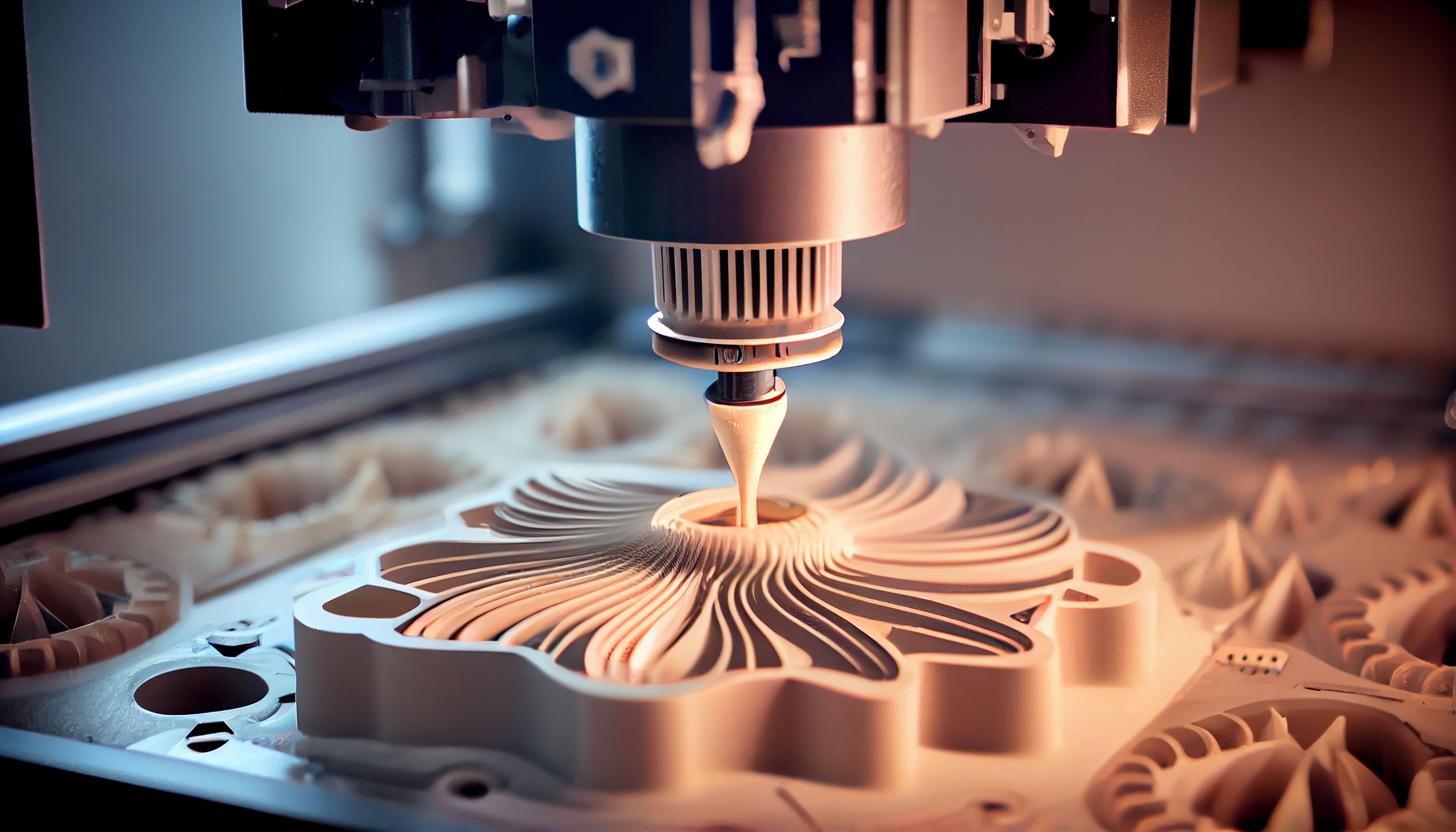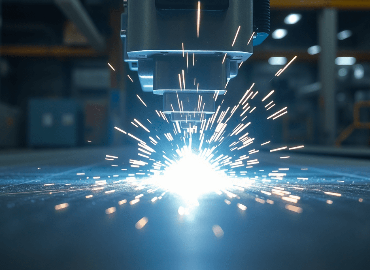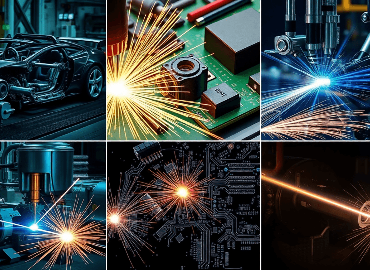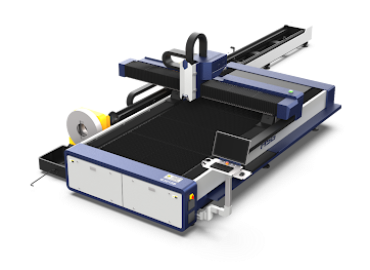In today's world of advanced manufacturing and Laser Technologies, laser engraving machines have become essential tools for various industries. These machines use powerful lasers to etch, mark, or engrave various materials with great precision and skill. They have completely changed how we create and design products, from personalized items to industrial uses.
Laser engraving has transformed the way we personalize and decorate materials like wood, metal, glass, or leather. It offers unmatched precision, flexibility, and creativity.
What is a Laser Engraving Machine?
A laser engraving machine is a sophisticated device that uses a laser beam to accurately engrave, mark, or cut materials. The laser beam is a highly concentrated and intense light that can be controlled to remove material from the workpiece's surface, leaving a permanent mark. Laser engraving involves controlled burning or vaporization of the material, resulting in a clear and precise marking.
The idea of using lasers for engraving and cutting dates back to the s when the first laser was developed. However, it was not until the s that laser engraving machines became commercially available. Initially, they were mainly used in industries due to their high cost and complexity. But now, with advancements and demand, laser engraving machines are more affordable and user-friendly, making them accessible to small businesses and hobbyists.
How Does Laser Engraving Work?
Laser engraving works by concentrating energy through photons. The laser beam is generated in a device called a resonator and directed through mirrors and lenses to focus on a precise spot in the material. The focused laser beam heats and vaporizes or melts the material.
For engraving, the laser moves along the material's surface, following the desired pattern. The depth of the engraving is controlled by adjusting the laser power and speed. For cutting, the laser continuously moves along the desired path until the material is cut.
Advantages of Laser Engraving Machines:
1. Precision and Accuracy:
Laser engraving machines offer unparalleled precision and accuracy in etching designs on various materials. They can produce intricate details and complex patterns with consistent results, ensuring high-quality finished products.
2. Versatility:
These machines can engrave on a wide range of materials, including metals, plastics, wood, glass, leather, and even stone. This versatility allows for diverse applications in different industries, from jewellery making to automotive parts manufacturing.
3. Non-Contact Process:
Laser engraving is a non-contact process, meaning there is no physical force applied to the workpiece. This eliminates the risk of damage or distortion of delicate materials and ensures a clean and flawless engraving.
4. Speed and Efficiency:
Laser engraving is a rapid process, and once the design is set up, it can be repeated on multiple workpieces with consistent speed and precision. This efficiency is particularly beneficial for large-scale production and industrial applications.
5. Personalization and Customization:
Laser engraving machines enable easy customization and personalization of products, making them popular in the gift and promotional items industry. Unique designs, names, or messages can be engraved on items to add a personal touch.
6. Minimal Waste:
Since laser engraving is a subtractive process, there is minimal material wastage. The laser beam selectively removes material only from the marked areas, leading to cost-effectiveness and eco-friendly operations.
7. Automation and Integration:
Laser engraving machines can be integrated into automated production lines, reducing the need for manual intervention and improving overall productivity.
Disadvantages of Laser Engraving Machines:
1. Initial Investment:
Laser engraving machines can be expensive, especially high-powered and technologically advanced models. The initial investment may pose a significant barrier for small businesses or hobbyists.
2. Maintenance Costs:
Regular maintenance and servicing are essential to keep the laser engraving machine in optimal condition. The cost of maintenance, including replacing laser tubes and other components, can add to the overall operating expenses.
3. Limited Depth Control:
While laser engraving machines offer high precision, they may have limitations when it comes to controlling the depth of the engraving. Some materials may be prone to charring or burning, which can affect the depth and quality of the engraving.
4. Material Limitations:
While laser engraving works on various materials, certain materials, such as reflective metals or materials with high heat conductivity, may not be suitable for laser engraving or require specialized equipment.
5. Safety Considerations:
Laser engraving machines emit high-intensity laser beams, which can be hazardous if not used properly. Adequate safety measures, such as protective eyewear and proper training, are necessary to ensure safe operation.
6. Design Limitations:
Laser engraving is most effective for D designs and surface engravings. Creating complex D designs may require additional processes and machinery.
Exploring Different Laser Engraving Techniques
Laser engraving techniques have come a long way since their inception. Today, several advanced methods dominate the industry, each possessing unique characteristics that cater to specific needs. Let's delve into these techniques:
1. CO Laser Engraving
The CO laser engraving technique is one of the most popular methods for its versatility and effectiveness. It operates on a gas mixture of carbon dioxide, nitrogen, hydrogen, and helium. The CO laser emits a high-powered infrared beam, perfect for engraving organic materials like wood, leather, paper, and fabrics. Its precision and ability to create intricate designs make it a favourite among artisans and industrial manufacturers alike.
2. Fibre Laser Engraving
Fibre lasers have gained significant traction in recent years, especially in industrial applications. These lasers employ optical fibres to amplify the laser beam, resulting in exceptional speed, precision, and energy efficiency. Fibre laser engraving is ideal for marking and engraving metals, plastics, and ceramics with unparalleled clarity and permanence.
3. Diode-Pumped Laser Engraving
Diode-pumped laser engraving, also known as DPSS (Diode-Pumped Solid State), is widely used for high-end and intricate applications. The technique utilizes diode-pumped crystals like neodymium-doped yttrium aluminium garnet (Nd: YAG) to generate the laser beam. DPSS lasers excel at engraving metals, crystals, and even some transparent materials like glass.
4. Galvo Laser Engraving
Galvo laser engraving employs galvanometric mirrors to direct the laser beam quickly and accurately. This technique allows for rapid and precise marking, making it popular in the electronics and automotive industries. Galvo lasers can be marked on the fly, enabling seamless integration into production lines for mass customization. Matrix Textile is one such “high-end” laser machine for textile roll processing with laser technology
5. MOPA Laser Engraving
MOPA (Master Oscillator Power Amplifier) laser engraving offers versatility in pulse durations, allowing control over heat-affected zones during marking. This technique is ideal for creating various contrasts between metals and plastics, making it suitable for intricate and detailed designs.
6. Green Laser Engraving
Green laser engraving employs frequency-doubled solid-state lasers, primarily using neodymium-doped crystals. The green laser beam offers enhanced visibility, making it preferable for high-precision applications like micro-engraving and fine art.
7. UV Laser Engraving
UV laser engraving uses ultraviolet beams to ablate the surface of materials. This technique is perfect for marking delicate materials like glass, ceramics, and certain plastics without causing damage or thermal stress.
8. Deep Laser Engraving
Deep laser engraving focuses on removing a considerable amount of material to create deeper and more durable engravings. This technique is essential for industries like firearms, aerospace, and automotive, where the engraving needs to withstand harsh conditions.
9. Rotary Laser Engraving
Rotary laser engraving utilizes rotating fixtures to engrave cylindrical and curved surfaces with precision. This technique is commonly applied in the jewellery industry for customizing rings, bracelets, and other round objects.
10. D Laser Engraving
D laser engraving employs advanced laser technology to create three-dimensional engravings on various materials. This technique enables the production of intricate and lifelike D designs, captivating audiences with its artistry.
11. Hybrid Laser Engraving
Hybrid laser engraving combines laser technology with other processes like milling or cutting to achieve a multifaceted approach to material processing. This technique is ideal for intricate applications requiring both engraving and cutting.
12. Continuous Wave Laser Engraving
Continuous wave laser engraving uses a continuous laser beam to engrave materials. This technique is widely employed in medical devices, microelectronics, and scientific research due to its precision and stability.
13. Pulsed Laser Engraving
Pulsed laser engraving generates high-energy pulses to remove material in controlled bursts. This technique is used for delicate materials like ceramics, semiconductors, and polymers.
14. Photochemical Laser Engraving
Photochemical laser engraving relies on chemical reactions induced by laser beams to engrave materials like metals and plastics. This technique is known for its exceptional accuracy and resolution.
15. Black Laser Engraving
Black laser engraving creates a dark, contrasting mark on light-coloured materials like stainless steel and aluminium. The technique is often used for branding and artistic applications.
16. Laser Foil Printing
Laser foil printing combines laser engraving with foil transfer to create vibrant metallic designs on various materials, including leather, paper, and fabrics.
17 . Subsurface Laser Engraving
Subsurface laser engraving, also known as D crystal engraving, creates intricate designs within transparent materials like glass and crystal, adding a mesmerizing visual effect.
18. Laser Annealing
Laser annealing modifies the surface properties of metals, creating durable and visually appealing engravings. This technique is used in the aerospace and automotive industries for part identification and labelling.
19 . The Future of Laser Engraving
The field of laser engraving is constantly evolving, and innovative technologies are paving the way for exciting advancements. Discover the potential of laser engraving in the coming years and its impact on various industries.
In conclusion, the exploration of different laser engraving techniques reveals a diverse and versatile array of methods for precision marking and customization across various materials. From traditional CO lasers to advanced fibre and diode lasers, each technique offers unique advantages in terms of speed, precision, and compatibility with different materials.
Laser engraving has emerged as a key technology in industries like manufacturing, art, and personalization, enabling intricate designs, branding, and product identification. As technology continues to evolve, we can expect even more innovative laser engraving techniques to further revolutionize the field and open up new possibilities for creative expression and industrial applications.






